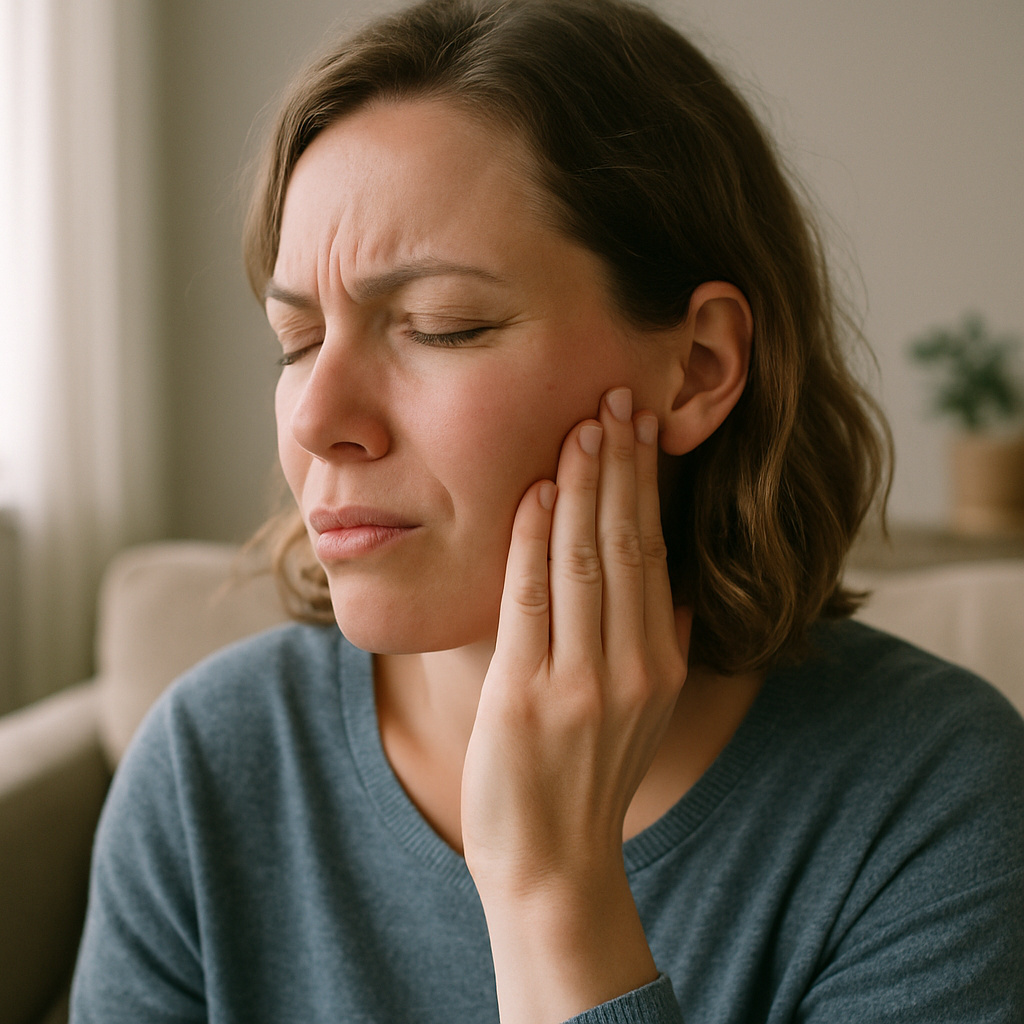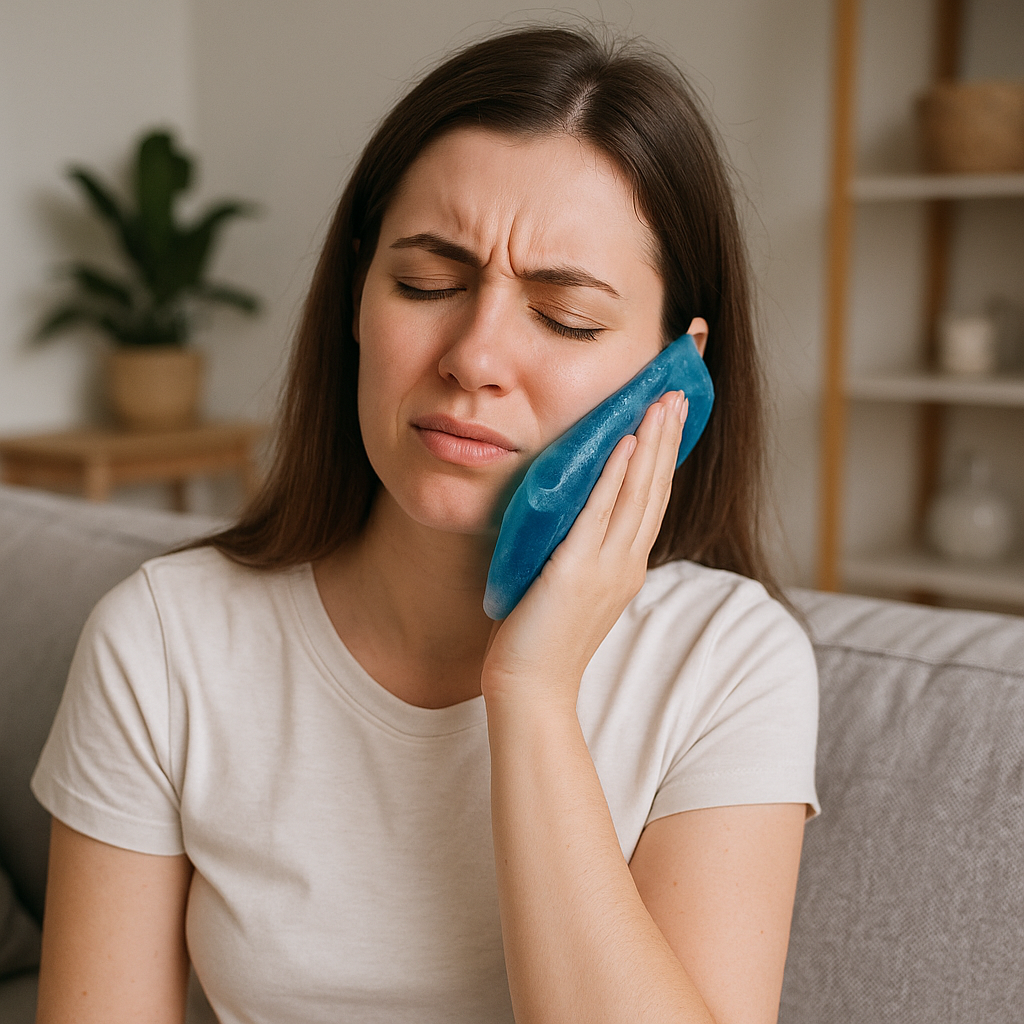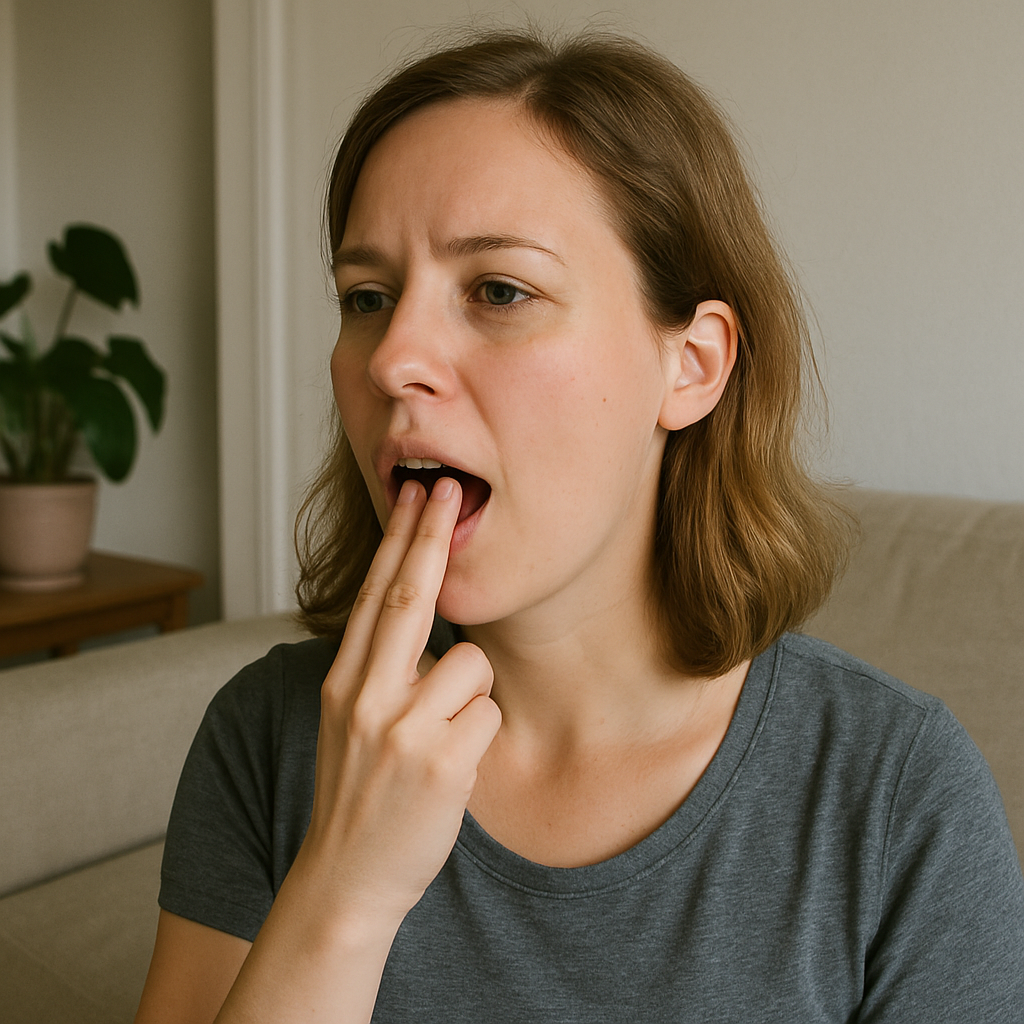Ask Ayurvedic doctor a question and get a consultation online on the problem of your concern in a free or paid mode. More than 2,000 experienced doctors work and wait for your questions on our site and help users to solve their health problems every day.
Shop Now in Our Store
How to Cure TMJ Permanently: Ayurvedic, Natural, and At-Home Treatments

If you've been experiencing jaw pain, clicking sounds, or chronic headaches, you might be dealing with temporomandibular joint disorder (TMD). This disorder is more common than you think, and there are many practical, holistic solutions that can provide lasting relief.
From Ayurvedic approaches to simple TMJ treatment exercises, this article will explain everything about how to cure TMJ permanently. It will help you understand the root cause of this disorder and apply natural, science-backed methods. Whether you are looking for TMJ treatment at home, hoping to cure TMJ naturally, or just curious about exercises to cure TMJ, this article will help you with easy-to-apply tips and useful details.

What Is TMJ and How Ayurveda Understands It
Understanding the Jaw Joint and TMJ Problems
The temporomandibular joint (TMJ) is the part of your body that connects your jaw to your skull. It helps you do everyday things like chewing, talking, and making facial expressions. When this joint gets sore, stressed, or doesn’t move properly, it can cause a problem called temporomandibular joint disorder (TMD).
People with TMD may feel pain when chewing, hear clicking or popping sounds in their jaw, or get headaches and earaches. It can make simple things uncomfortable, but the good news is — it can be treated with the right care.
TMD is not just a mechanical issue. It’s a signal that your body is out of balance — and healing it requires more than just medication. By understanding the anatomy, we also see why TMJ pain treatment exercises and lifestyle changes are so effective.
Dosha Involvement in TMJ Pain and Stress Response
From an Ayurvedic point of view, TMJ pain is often linked to an imbalance in the Vata dosha, which governs movement and nerve function. Too much Vata can cause dryness, tension, and nerve issues — all of which affect TMJ. Emotional stress makes this worse.
Pitta imbalance, which relates to heat and inflammation, may also play a role, especially when there is sharp pain or swelling. Ayurveda provides a full-body approach to healing, targeting both physical and emotional causes.

Causes and Symptoms of TMJ Disorder
TMJ Headaches, Jaw Tension, and Clicking Sounds
TMJ disorder isn’t always just jaw pain. Many people get TMJ headaches, especially near the temples or behind the eyes. Jaw stiffness may make it hard to open your mouth wide or chew comfortably. Clicking, popping, or grinding noises when you move your jaw are also common signs.
Ignoring these symptoms can make things worse over time. Early temporomandibular joint dysfunction self-care can stop the problem from becoming long-term.
Emotional and Physical Triggers Behind Chronic TMJ Pain
Chronic TMJ pain often comes from more than one cause. Stress can lead to jaw clenching or teeth grinding, especially at night. Physical causes include injuries, bad dental alignment, or poor posture (like looking down at your phone a lot).
Modern life adds to these triggers, which is why temporomandibular joint dysfunction relaxation techniques like breathwork and yoga are becoming popular.
How Misalignment and Lifestyle Habits Contribute to TMJ
Bad posture, like slouching or pushing your head forward, puts pressure on the jaw. Habits like chewing gum too much, biting nails, or grinding your teeth at night can make the problem worse.
That’s why TMJ treatment needs a full approach — not just physical changes but also daily habits and stress management. The good news is, most solutions can be done at home with consistency.

How to Cure TMJ Permanently with Natural Remedies
For those exploring how to cure TMJ at home, natural solutions can be gentle and powerful. A true cure often comes from consistent self-care, not just short-term fixes.
Ayurvedic Herbs and Oils for Jaw Joint Relief
Ayurvedic herbs like ashwagandha, bala, and turmeric help relax muscles, calm the nervous system, and reduce inflammation. You can take them as teas or capsules, or use them in oil form.
Mahanarayan oil, a special Ayurvedic blend, works great when massaged into your jaw and temples. It boosts blood flow, relaxes the area, and supports proper alignment — which makes it an excellent treatment for TMJ.
TMJ Treatment at Home with Massage and Diet Adjustments
A simple way to cure TMJ naturally is with self-massage and diet changes. Use your fingers in gentle circles on your jaw, temples, and neck to reduce tension.
Diet also matters. Soft, warm foods like soups and teas are easier on the jaw. Avoid hard, sticky, or crunchy foods. Cut back on caffeine and sugar, which can increase inflammation and stress — both big triggers for TMJ.
These small changes form the foundation of effective TMJ treatment at home.
Temporomandibular Joint Dysfunction Relaxation Techniques
Relaxation is one of the most helpful but often overlooked temporomandibular joint dysfunction treatments. Since stress causes jaw tension, relaxing daily can make a big difference.
Start with progressive muscle relaxation, especially around the face and jaw. Try alternate nostril breathing (Nadi Shodhana) to calm the nervous system.
Even 10 minutes of meditation, gentle stretching, or breathwork can create long-term change when done regularly.

Exercises and Daily Practices for TMJ Recovery
Proper movements can help restore alignment, improve jaw function, and relieve tension. That’s why TMJ treatment exercises are a key part of your recovery process.
TMJ Treatment Exercises to Relieve Tension and Improve Alignment
Start with simple resistance exercises. For example:
-
Gently press your tongue to the roof of your mouth and slowly open your jaw without straining.
-
Place two fingers on your chin and apply light resistance while opening and closing your mouth.
These exercises to cure TMJ help retrain how your jaw moves and strengthen nearby muscles.
⚠️ Tip: Do these slowly, with full awareness. Never push through pain. Your goal is stability, not force.
Gentle Movements and Breathing for Jaw Relaxation
Somatic exercises, like gentle neck rolls and shoulder shrugs, can release tension in areas that impact the jaw. Combine these with deep belly breathing:
-
Inhale by expanding your abdomen.
-
Exhale slowly, softening your jaw as you breathe out.
The more often you relax your jaw and facial muscles while breathing, the faster you’ll see improvements.
Doing these movements regularly reduces both immediate pain and long-term tension, which is critical for any lasting temporomandibular joint (TMJ) disorder treatment.
Self-Care Routines for Long-Term TMJ Healing
Consistency is everything. Build a simple daily self-care routine to support healing:
-
Morning: Do 5 minutes of jaw massage and 5 minutes of calm breathing.
-
Midday: Eat soft foods for lunch, check your posture, and avoid clenching your jaw.
-
Evening: Perform gentle TMJ exercises, apply a warm compress, and sip calming herbal tea.
Over time, these habits become second nature. Many people find that sticking to them helps cure TMJ naturally — no drugs or surgeries needed.
Conclusion
Living with TMJ disorder can be tough — it affects your comfort, sleep, mood, and ability to enjoy everyday activities. But lasting relief is possible.
When you understand TMJ from both a physical and holistic perspective, you gain the power to heal. Whether you want to know how to cure TMJ permanently or are just looking for simple TMJ treatment at home, the path forward is clear: take consistent, natural steps that target the root cause.
Ayurveda teaches that balance is the foundation of health. This applies to your jaw too. True recovery includes:
-
Calming the nervous system
-
Improving posture and jaw alignment
-
Using TMJ pain treatment exercises
-
Practicing daily relaxation techniques
-
Making mindful choices in food and self-care
There’s no magic cure, but with patience and the right tools, you can find relief and reclaim your comfort.
💡 If this article helped you, please share it. You never know who’s silently struggling with jaw pain.
TMJ doesn’t have to be a life sentence — it can be a turning point toward deeper healing and self-awareness.
FAQs
Which drink is best for TMJ?
Warm, soothing drinks that reduce inflammation work best. Try:
-
Chamomile tea
-
Turmeric and ginger tea
-
Ayurvedic golden milk (warm plant-based milk with turmeric and ghee)
Avoid fizzy drinks or too much caffeine — they can increase stress and inflammation.
Which breathing exercises are most effective for reducing jaw tension?
Two great options:
-
Box breathing: Inhale 4 counts → Hold 4 → Exhale 4 → Hold 4. Repeat.
-
Alternate nostril breathing (Nadi Shodhana): Calms the mind and reduces clenching.
Both are excellent for temporomandibular joint dysfunction relaxation techniques.
Can daily stress relief practices prevent TMJ flare-ups?
Yes! Stress is a major TMJ trigger. Daily practices like:
-
Meditation
-
Somatic movement
-
Breathwork
-
Gratitude journaling
can reduce flare-ups and help your jaw stay relaxed. This makes temporomandibular joint dysfunction self-care not just helpful — but essential.
This article is checked by the current qualified Dr Sujal Patil and can be considered a reliable source of information for users of the site.

